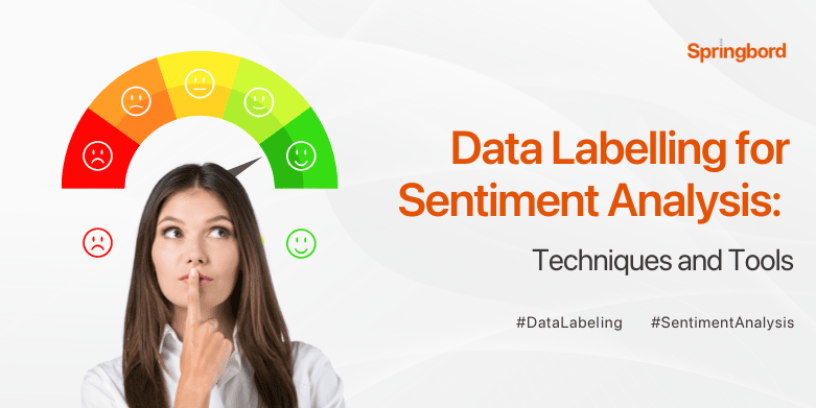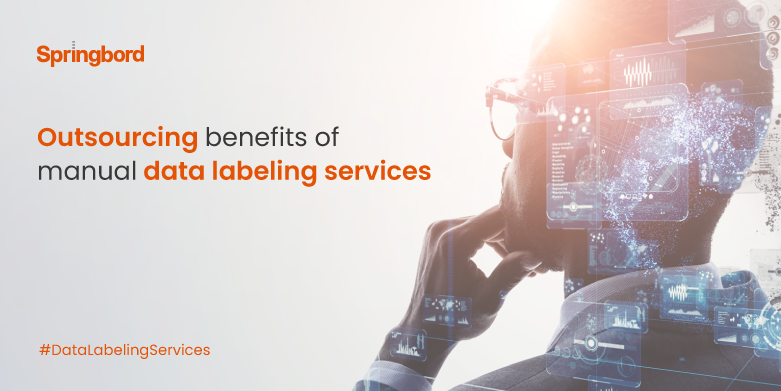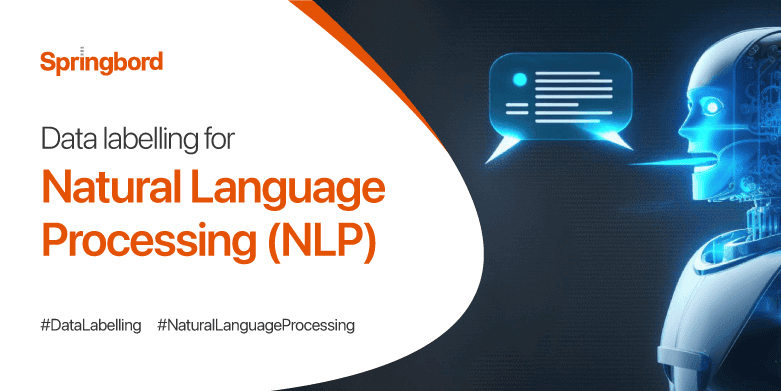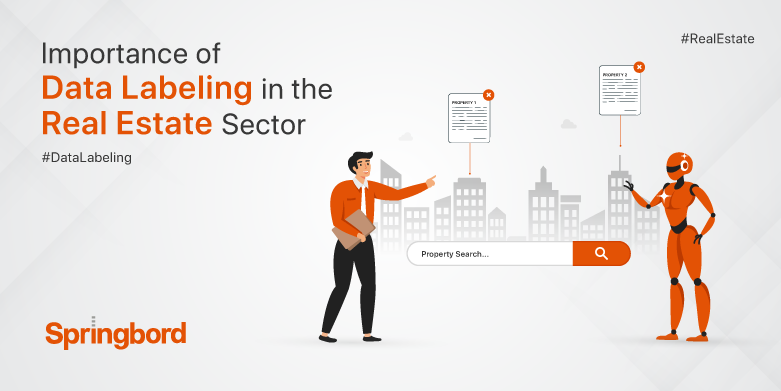 Read time 8 min
Read time 8 minData labeling for sentiment analysis is essential for gleaning insights from textual data. Sentiment analysis, the process of identifying and categorizing emotions conveyed in a text, has risen to prominence in numerous fields.
Accurately labeled data is essential for performing effective sentiment analysis.
This article explores the techniques and tools used for data labeling in sentiment analysis.
Understanding Sentiment Analysis
Analyzing the emotional tone of written content is the goal of sentiment analysis, often called opinion mining. Sentiment analysis determines a body of text’s underlying tone and categorizes it as positive, negative, or neutral.
Sentiment analysis allows for automatically extracting subjective information from large amounts of textual data by utilizing natural language processing (NLP) and machine learning methods.
Applications and Benefits of Sentiment Analysis:
Sentiment analysis finds applications in numerous fields, including marketing, customer service, social media monitoring, brand reputation management, and market research.
Sentiment analysis is a useful tool in marketing for gauging customer opinion, spotting trends, and making data-driven decisions to serve customers better.
Sentiment analysis is useful in customer service since it helps classify client input and spot problems. Sentiment analysis is used by social media monitoring services to learn about public opinion, locate influential people, and watch consumer reactions to brands.
Sentiment research also helps analyze political discourse, detect changes in the financial markets, and enhance patients’ healthcare experience.
Sentiment analysis has numerous uses and advantages. Businesses can use this information to understand better their customers’ wants, needs, and expectations, facilitating more precise marketing and service efforts.
Customer satisfaction and brand loyalty can both increase when complaints are addressed quickly, thanks to the insights provided by sentiment analysis. Businesses may better handle crises and defend their reputations by relying on public opinion in real time.
In addition, academics and politicians can use sentiment analysis to gauge public opinion on various social issues and make decisions based on hard data.
Approaches and Techniques Used in Sentiment Analysis:
Sentiment analysis encompasses various approaches and techniques, depending on the complexity of the task and the available resources. Some commonly used techniques include:
- Rule-Based Approaches: Methods that use a set of predetermined linguistic rules and heuristics to determine emotional tone are called rule-based.
The emotional tone of the text is identified with the use of lexicons or dictionaries containing words tagged with sentiment scores. The sentiment is categorized based on whether or not specific words and phrases are present.
- Machine Learning Approaches:
Machine learning strategies must train models on labeled datasets to understand patterns and categorize opinions.
Deep Learning models such as Recurrent Neural Networks (RNN) and Convolutional Neural Networks (CNN) are frequently used, as are supervised learning techniques like Support Vector Machines (SVM) and Naive Bayes. These models are taught to predict unknown text based on labeled data.
- Hybrid Methods: These methods use the best features of both rule-based and machine-learning approaches and mix them. To prepare data for training machine learning models, these methods utilize linguistic principles to extract features. Combining rule-based and statistical methods typically results in higher-quality sentiment classification.
- Aspect-Based Sentiment Analysis:
One such method, “aspect-based sentiment analysis,” zeroes in on the reader’s emotions about selected parts of the text or named entities. It entails locating and extracting features of interest and categorizing feelings connected to those features.
Particularly useful is aspect-based sentiment analysis in cases like reviews and feedback, where opinions may be divided along multiple dimensions.
Data Labelling for Sentiment Analysis
Data labeling refers to annotating text data with sentiment labels, such as positive, negative, or neutral, to create a labeled dataset for training sentiment analysis models. Human annotators or automated algorithms annotate individual data instances with sentiment labels based on expressed emotions.
Ground truth labels are required to train and evaluate machine learning models, making data labeling crucial in sentiment analysis. Labeled data is used as a reference to train the model to recognize the connection between textual patterns and emotion.
Sentiment analysis models may return erroneous results if clean, well-labeled data are not fed. The efficacy and efficiency of sentiment analysis algorithms are directly related to the quality and reliability of labeled data.
Challenges and Considerations in Data Labelling:
Data labeling for sentiment analysis involves several difficulties and factors to think about. For starters, because emotions are personal, it’s tough to agree on a single name to describe a piece of text.
Disagreements may arise because annotators may use their judgment when assigning sentiment labels. Having clear criteria for annotators to follow and ensuring that they agree with one another will assist in overcoming this difficulty.
Domain-specific labeling presents another obstacle. Adapting the labeling procedure to the specific domain of interest is crucial because sentiment expressions and language nuances vary across different domains.
Accurately capturing domain-specific feelings requires the assistance of domain experts or annotators with domain knowledge.
Data labeling scalability is also a major factor to think about. Manually labeling huge datasets can take a lot of effort and resources. The labeling process can be improved using strategies like crowd-sourcing or active learning, in which the most informative cases are chosen for labeling.
Still, there are open questions about how to ensure best the accuracy of crowd-sourced labels and how to best identify informative examples for active learning.
Role of Annotated Data in Training Sentiment Analysis Models:
Annotated data serves an essential part in training sentiment analysis algorithms. Models can learn the correlations and patterns between textual features and sentiment labels using annotated data as a training set. When exposed to many sentiment-labeled examples, models can generalize and accurately predict unseen text.
Sentiment analysis algorithms can capture different sentiment expressions, consider linguistic variances, and generalize across domains when a big and diverse annotated dataset is available.
In addition, sentiment analysis models can be evaluated and compared using annotated data, leading to better model selection and improvement.
As a bonus, annotated data is a great tool for creating and refining pre-trained language models. The model’s understanding and prediction abilities for sentiment are improved by using sentiment-labeled data during pre-training or fine-tuning.
Techniques for Data Labelling
Data labeling is a crucial step in training machine learning models. Data is annotated or tagged with categories or labels that offer context for the model.
To construct trustworthy models, accurate and high-quality labeled data is required. Here are some key techniques for data labeling:
- Manual Annotation: Annotating data by hand is called “manual annotation,” it is one of the most used methods for labeling data. It requires human experts to look at the data and identify it correctly based on their knowledge.
Manual annotation’s pinpoint labeling is invaluable for complex or subjective jobs requiring human judgment. But it may be costly and time-consuming, especially when working with big data. Annotation tools and platforms are frequently employed to simplify the process and boost productivity in response to these obstacles.
- Crowd Labelling: Crowd labeling, also known as crowd annotating or crowdsourcing, delegates data labeling tasks to many people. Access to a huge pool of employees proficient in the rapid annotation of massive datasets is made possible by platforms like Amazon Mechanical Turk and Figure Eight.
Since jobs may be delegated to several people, crowd labeling is scalable and cost-effective. However, maintaining labeling quality can be difficult because of differences in experience and possible biases among crowd workers.
Results can only be trusted if they are the product of meticulous task design, employee qualification, and quality control procedures.
- Active Learning: Active learning is a form of semi-supervised learning in which data samples are annotated based on a predetermined set of criteria. Active learning algorithms selectively annotate the most informative or uncertain occurrences from the dataset iteratively.
Active learning decreases the annotation workload while keeping model performance steady by directing labeling efforts toward the most relevant samples. Common active learning methods include uncertainty sampling, query-by-committee, and predicted model change.
Active learning requires an initially labeled dataset for seed training, but it can drastically minimize annotation costs and speed up model training.
- Transfer Learning and Pre-trained Models: Using previously trained models from big labeled datasets is at the heart of transfer learning. With transfer learning, you can avoid relabeling data twice by applying what you already know.
It is possible to fine-tune the pre-trained models on the target dataset using only a small amount of labeled data. This method speeds up model construction and avoids the need for laborious labeling.
Transfer learning is very effective when the target task is similar to the one on which the pre-trained model was trained. It makes it possible to apply the characteristics, patterns, and representations acquired on one job to another.
- Weak Supervision: Weak supervision is a method for dealing with the difficulty of sparse or poorly labeled data. It entails creating rough labels for the data using other sources of knowledge or heuristics. Weak supervision is an alternative to manual labeling that uses already acquired information, external resources, or domain-specific norms.
Weak supervision uses remote supervision, data programming, and knowledge distillation. It is important to carefully control and account for any biases or errors introduced by the auxiliary sources when using weak supervision, even though it makes it possible to scale up the annotation process and deal with noisy data.
Tools for Data Labelling
Data labeling plays a crucial role in sentiment analysis, enabling the creation of labeled datasets for training and evaluating machine learning models. Data labeling technologies can greatly enhance productivity and efficiency, unlike human data labeling, which can be time-consuming and resource-intensive.
These tools include several useful features and functionalities to streamline the annotation procedure and guarantee the accuracy of labeled data.
- Labelling Toolkits: Labelling toolkits are all-encompassing systems developed for labeling data. These toolkits allow annotators to quickly and easily annotate text data with sentiment.
They typically provide options to highlight text, tag it, and select different emotions from a list. Labelbox, Prodigy, and Doccano are a few widely used labeling toolkits.
Annotators can work together using these programs to guarantee uniform labeling and facilitate project management.
- Annotation Tools for Crowdsourcing: Specialised annotation tools are frequently used for data labeling when crowd-sourcing methods are employed. These aid in getting information out to crowd employees and keeping tabs on the labeling operation.
Annotation tools built for crowdsourced data labeling are available on platforms like Amazon Mechanical Turk, Figure Eight (previously CrowdFlower), and Appen. You can build up your project, vet your workers, and monitor how annotating works in real time.
- Active Learning Tools: Active learning is a semi-automatic data labeling method that uses tools to identify the most informative instances to label on an iterative basis. Automatically recommending instances for annotation based on their uncertainty or predicted learning benefit, active learning technologies aid in this approach.
Active learning optimizes the labeling effort by selecting instances the model is unsure about, concentrating on data points that enhance the model’s performance. Active learning features are available for data labeling in sentiment analysis using tools like Modzy, Prodigy, and Snorkel AI.
- Rule-based Labelling Tools: Tools that utilize predetermined rules or patterns to classify text data with sentiment indicators automatically are called rule-based labeling tools. These techniques are invaluable when there is a requirement for preliminary labeling before human review or when sentiment expressions follow precise linguistic patterns.
Rule-based labeling is possible because of open-source libraries like spaCy and NLTK, which allow for developing and implementing individualized rule sets for sentiment analysis applications.
To Sum Up
Effective data labeling is crucial for sentiment analysis, which enables businesses to obtain valuable insights from vast amounts of textual data. Springbord Data Labeling service is an excellent option for businesses seeking dependable and precise labeling services.
Springbord Data Labeling service provides client-specific labeling solutions tailored to their extensive experience and knowledge.
By utilizing their services, businesses can access actionable information about their consumers and behaviors, enabling them to make informed decisions and drive success in today’s data-driven environment.







